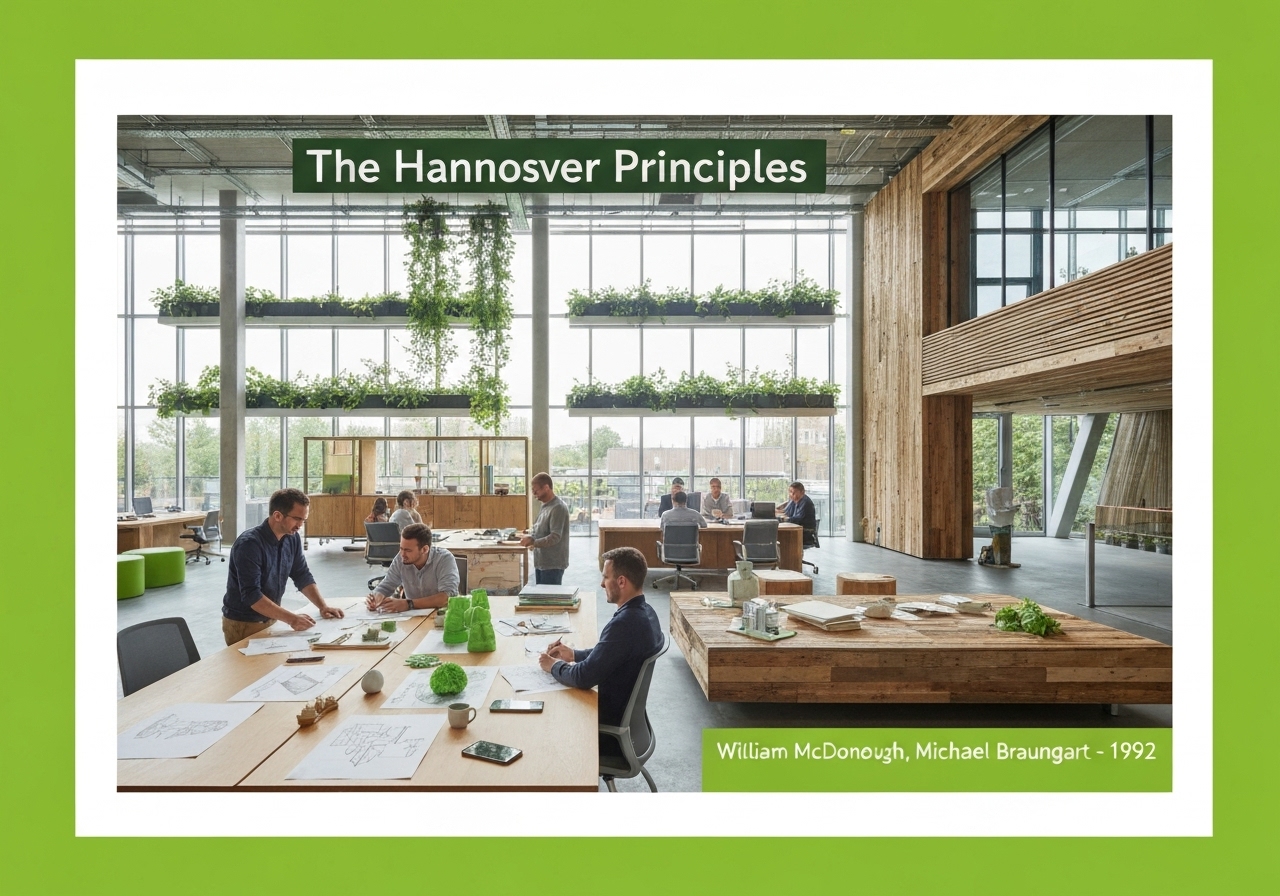由威廉·麦克多诺和迈克尔·布朗加特共同提出的九项可持续设计基本原则。这些原则倡导人类与自然共存的权利,承认相互依存,尊重精神与物质的关系,承担设计后果的责任,创造具有长期价值的安全物品,消除浪费,依赖自然能源流动,并理解设计的局限性。


(generate image for illustration only)
由威廉·麦克多诺和迈克尔·布朗加特共同提出的九项可持续设计基本原则。这些原则倡导人类与自然共存的权利,承认相互依存,尊重精神与物质的关系,承担设计后果的责任,创造具有长期价值的安全物品,消除浪费,依赖自然能源流动,并理解设计的局限性。
The Hannover Principles were commissioned in 1992 by the City of Hannover, Germany, as a guiding framework for the design of the World’s Fair, Expo 2000. Architect William McDonough and chemist Michael Braungart collaborated to create this declaration of design interdependence. The principles move beyond simply minimizing harm (“eco-efficiency”) to a philosophy of creating positive, regenerative impacts (“eco-effectiveness”). They are not a prescriptive checklist but a set of values intended to inspire designers across all disciplines.
The nine principles are: 1. Insist on the rights of humanity and nature to co-exist. 2. Recognize interdependence. 3. Respect relationships between spirit and matter. 4. Accept responsibility for the consequences of design. 5. Create safe objects of long-term value. 6. Eliminate the concept of waste. 7. Rely on natural energy flows. 8. Understand the limitations of design. 9. Seek constant improvement by sharing knowledge. These principles laid the intellectual groundwork for later concepts like 从摇篮到摇篮 design, fundamentally shifting the conversation from doing “less bad” to actively doing “more good” through design.
迎接新挑战
机械工程师、项目、工艺工程师或研发经理
可在短时间内接受新的挑战。
通过 LinkedIn 联系我
塑料金属电子集成、成本设计、GMP、人体工程学、中高容量设备和耗材、精益制造、受监管行业、CE 和 FDA、CAD、Solidworks、精益西格玛黑带、医疗 ISO 13485
汉诺威原则
(如果日期不详或不相关,例如 "流体力学",则对其显著出现的时间作了四舍五入的估计)。
相关发明、创新和技术原理
{{标题}}
{%,如果摘录 %}{{ 摘录 | truncatewords:55 }}
{% endif %}